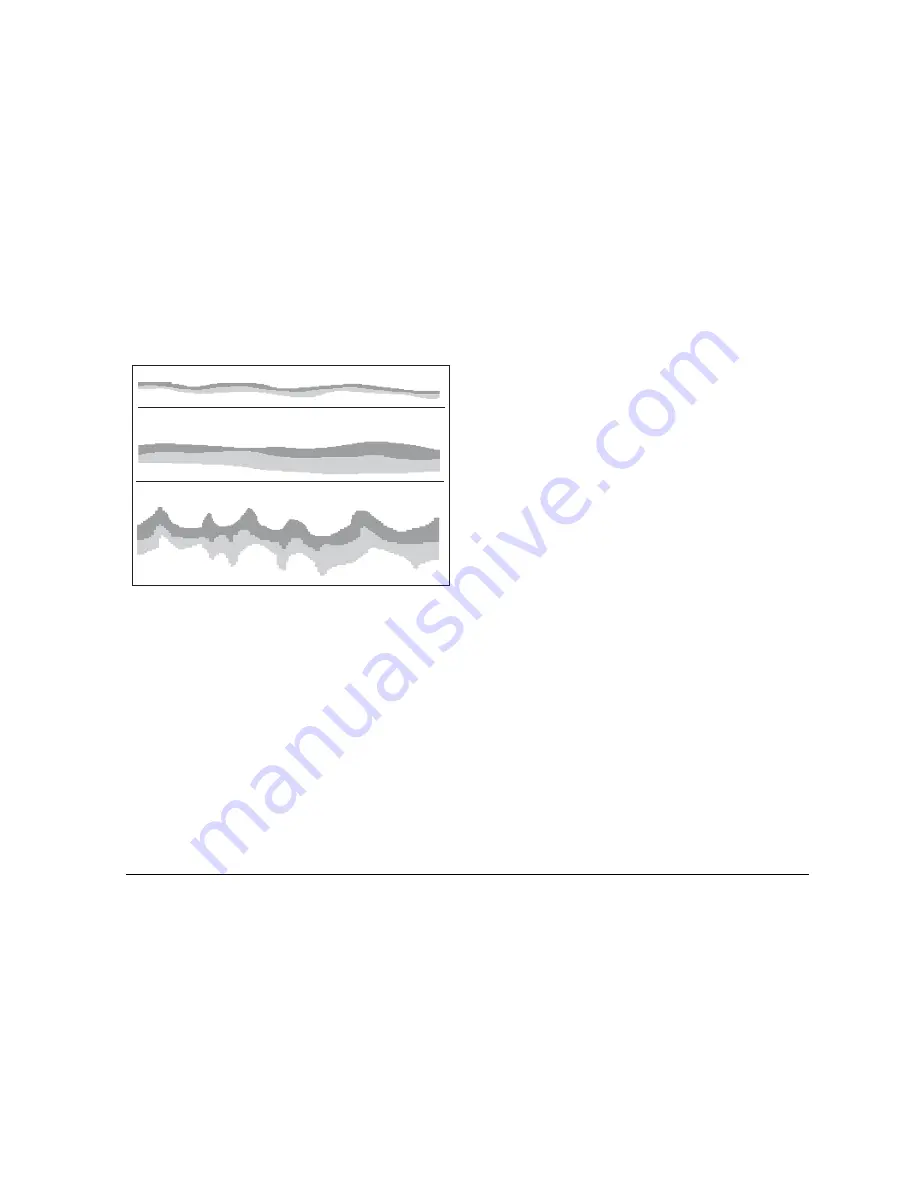
93
Chapter 8: The Fishfinder
8.4
Explaining the readout
The dark layers indicate a good echo; the lighter areas weaker ech-
oes. This could mean that the upper layer is soft and therefore
allowing sound waves to pass to the more solid layer below.
It is also possible that the sound waves are making two complete
trips – hitting the bottom, bouncing off the boat, then reflecting off
the bottom again. This can happen if the water is shallow, the bot-
tom is hard, or gain is set too high.
8.5
Factors influencing the readout
The quality and accuracy of the display can be influenced by a
number of factors including boat speed, depth, object size, back-
ground noise and transducer frequency.
Boat speed
The fishfinder’s reading of the bottom changes as your speed
changes. Slower speeds return flatter, more horizontal marks; as
your speed increases, the image will tend to thicken and arch, until
at high speeds the bottom resembles a double line on the fishfinder
display.
Depth
As sea depth increases, signal strength decreases, resulting in a
lighter on-screen image of the bottom.
Object size
The larger an object is, the stronger its return on the fishfinder dis-
play will be.
However, the strength of return from fish depends upon the spe-
cies’ swim bladder, rather than the body size.
Background noise
The fishfinder readout can be affected by weak echoes from float-
ing or submerged debris, air bubbles, or by your boat’s movements.
This background noise is also known as clutter, and the G-Series
system automatically adjusts sensitivity to it based on sea depth
and water conditions. You can, however, set the sensitivity manu-
ally by using the gain modes (gain, color gain and TVG).
Transducer frequency
•
Lower frequencies scan a wide area and penetrate water well.
Use these settings if you want a large coverage beneath your
boat or if you are in deep water.
D6855-2
A hard bottom (sand) produces a thin line
A soft bottom (mud or seaweed cover) produces a wide line.
The dark layer indicates a strong signal.
A rocky or uneven bottom or a wreck produces an irregular
image with peaks and troughs
Summary of Contents for GPM400
Page 1: ...G Series Systems Reference Guide...
Page 2: ......
Page 3: ...G Series System Reference Guide Document Number 81276 1 Date June 2007...
Page 8: ...G Series Installation Commissioning 8...
Page 12: ...G Series Reference Manual 12...
Page 20: ...G Series Reference Manual 20...
Page 34: ...G Series Reference Manual 34...
Page 89: ...89 Chapter 7 Autopilot Integration...
Page 90: ...G Series Reference Manual 90...
Page 110: ...G Series Reference Manual 110...
















































